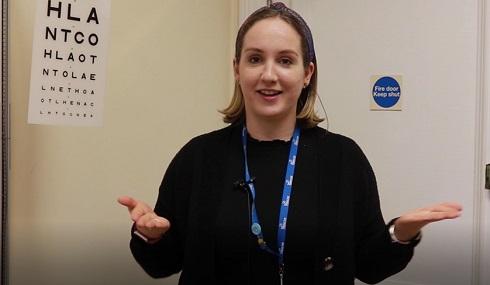
Published on: 20/01/20
Makaton is a form of sign language that uses symbols, signs and speech to enable children, young people and adults to communicate.

Published on: 20/01/20
Communication is an important skill in every day life so for children with disabilities who are unable to speak, or make their feelings known, Makaton may be one way they can learn to communicate. Almost everything we do requires communication from learning at school to asking for food and drink.
Makaton is based on British Sign Language but signs are used alongside speech at all times. Using signs can help people who have no speech or speech may not be clear, and symbols (for example on picture cards) help those unable to sign.
Makaton is flexible and can be used at any level appropriate to the individual’s needs. Many people drop the signs and pictures as their speech develops. Makaton also promotes an inclusive environment.
Louise, Consultant Speech and Language Therapist at The Children’s Trust, explained the benefits of learning and using Makaton and told us about the signing project being rolled out at The Children’s Trust.
“It offers the chance to communicate when perhaps verbal communication is not possible (too young, non-verbal), is difficult to understand (slurred speech, dyspraxia) or not accessible (for example with a tracheostomy, on a ventilator),” said Louise.
She continued: “Makaton can support the development of vocabulary as adding information to the spoken word helps build information about language and how language is stored.”
Makaton encourages children and young people to interact face to face; this enables social engagement and helps develop language skills.
Talking about the importance of being able to communicate negative words with Makaton, Louise said: “[This is] something I am passionate about. Not teaching negative words because we are worried what that might reveal removes the ability for the child/young person to say how they really feel or if they feel uncomfortable about something.
“We are very good at indicating happy, positive emotions and less able to indicate negative. Supporting access to appropriate vocabulary is essential. Makaton is developing new training around safeguarding, which includes vocabulary for bullying, friendships, emotions and intimate issues.”
When it comes to learning Makaton, Louise advised that it’s best to learn a small number of signs appropriate and relevant to the individual’s needs. Once the child is confident using Makaton in the correct context, and the meanings of signs are truly understood, then they can look at learning more.
If the individual is unable to use the recognised Makaton sign then it is about making sure the sign they do/can use is understood by others and used consistently.
Makaton is designed to be learnt either in developmental order or as needed. Louise said: “The most important thing about Makaton is it is to support communication. By doing it alongside spoken language we may still be aiming for verbal communication, but importantly a total communication approach.”
Here are some tips from Louise on using Makaton:
There are lots of online videos and resources for learning Makaton at home or you can attend signing workshops in your area.